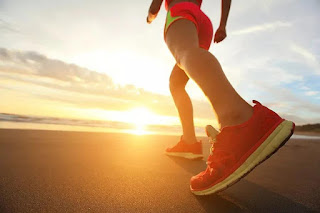Science articles on running injuries are popping up on all major platforms, but you can still see many friends getting injured during running. According to statistics, the body parts that are easily injured in running are the lower back, groin, leg muscles, knee joints, and foot areas such as ankles.
The most commonly injured parts of the body are the back and knee joints. Other injuries that tend to occur are meniscal tears, knee osteoarthritis, metatarsal pain, stress fractures, plantar fasciitis, and Achilles tendon injuries.
To prevent these injuries in running, you should practice more often.
Action 1
Iliotibial stretch
1. stand sideways next to a wall, then place the outside leg in front of the inside leg (the leg near the wall), with one hand against the wall for support.
2. Tilt the medial hip toward the wall and touch the wall as far as possible, with the feet flat on the floor.
3. Maintain the static stretch position for 15-30 seconds, and after several repetitions, exchange the position of the legs to continue the exercise.
Action 2
Body sensory standing balance
1. Stand in the middle of two walls. Straighten your arms in a straight line with your shoulders to maintain balance. Do not use the wall to maintain balance unless it is to prevent a fall.
2. Raise one knee to hip height at a 90-degree right angle with the shinbone perpendicular to the femur and close your eyes.
3. Hold this position for 15 to 30 seconds, lower the leg, and then switch to the other leg for the exercise. Repeat several times.
Action 3
Standing centrifugal heel lift
1. Stand with your feet on a step, heels hanging off the step. Place your hands against the wall in front of you. 2.
2. Raise the head of the metatarsals of both feet up and fully extend them (plantarflexion). 3.
3. Slowly lower your feet until they are fully extended (dorsiflexion).
Action 4
Standing calf extension
1. Stand facing the wall with one leg extended backward and the palm of the foot flat on the floor. Bend the other leg with the palm of the foot also flat on the floor directly below the hip. Extend your arms straight ahead, at the top of your chest and shoulder-width apart, and place your hands on the wall.
2. Gently press your hands against the wall, stretch your leg and slowly press the ground with your heel, feeling the stretch in your gastrocnemius.
3. Maintain the static stretch for 15-30 seconds, repeat several times, then switch to the other side for the exercise. Swap legs after each repetition and take turns practicing.
Action 5
Push the wall
1. Stand about 45 cm from the wall with your feet shoulder-width apart and your toes facing inward.
2. Press your pelvis toward the wall and adjust the distance between your body and the wall and the angle of your toes moderately to allow for optimal stretching of the flounder muscles. Keep your heels firmly on the floor.
3. Hold the stretch position for 15-30 seconds, then repeat the movement.
Action 6
Knee-chest stretch
1. Lie comfortably on the ground.
2. Use the strength of the quadriceps group to raise the knees and bend them at an angle of 90 degrees, then grab the back of the knees with both hands and pull the knees toward the chest, so that the lower part of the back and the upper part of the hips will feel the pull. At this point, resist the force generated by the other side of the hip so that the hip tight to the ground.
3. maintain this position for 15-30 seconds, repeat the exercise no more than 5 times; then change the other leg for practice. You can perform 2~3 rounds per day.
Action 7
Ankle Plantar Flexion
1. Sit comfortably with your body straight on a chair with a firm backrest. Start with the foot of the exercising leg flat on the floor and the knee bent at an angle of about 45 degrees, and adjust the position appropriately depending on the height of the chair. Lift the heel off the floor, turn the foot inward and point the toes downward, like a ballet move. Maintain this posture for about 15 seconds, followed by 10 repetitions, feet practice 2 to 3 rounds a day.
2. Prepare a chair, put it in place, and then fix an elastic band on the wall on an object that can not be moved. Sit on the chair in the same position as in step 1, then wrap the elastic band around the arch area and keep the foot as far away from the wall as possible. Use the elastic band to create resistance and pull back as far as possible to stop the foot from turning inward, a movement that strengthens the anterior tibial muscles. Maintain this position for 15 seconds, then repeat 10 times, and practice 2 to 3 rounds per day for both feet.
Have you learned the above exercise movements? Collect it and practice it every day.








No comments:
Post a Comment